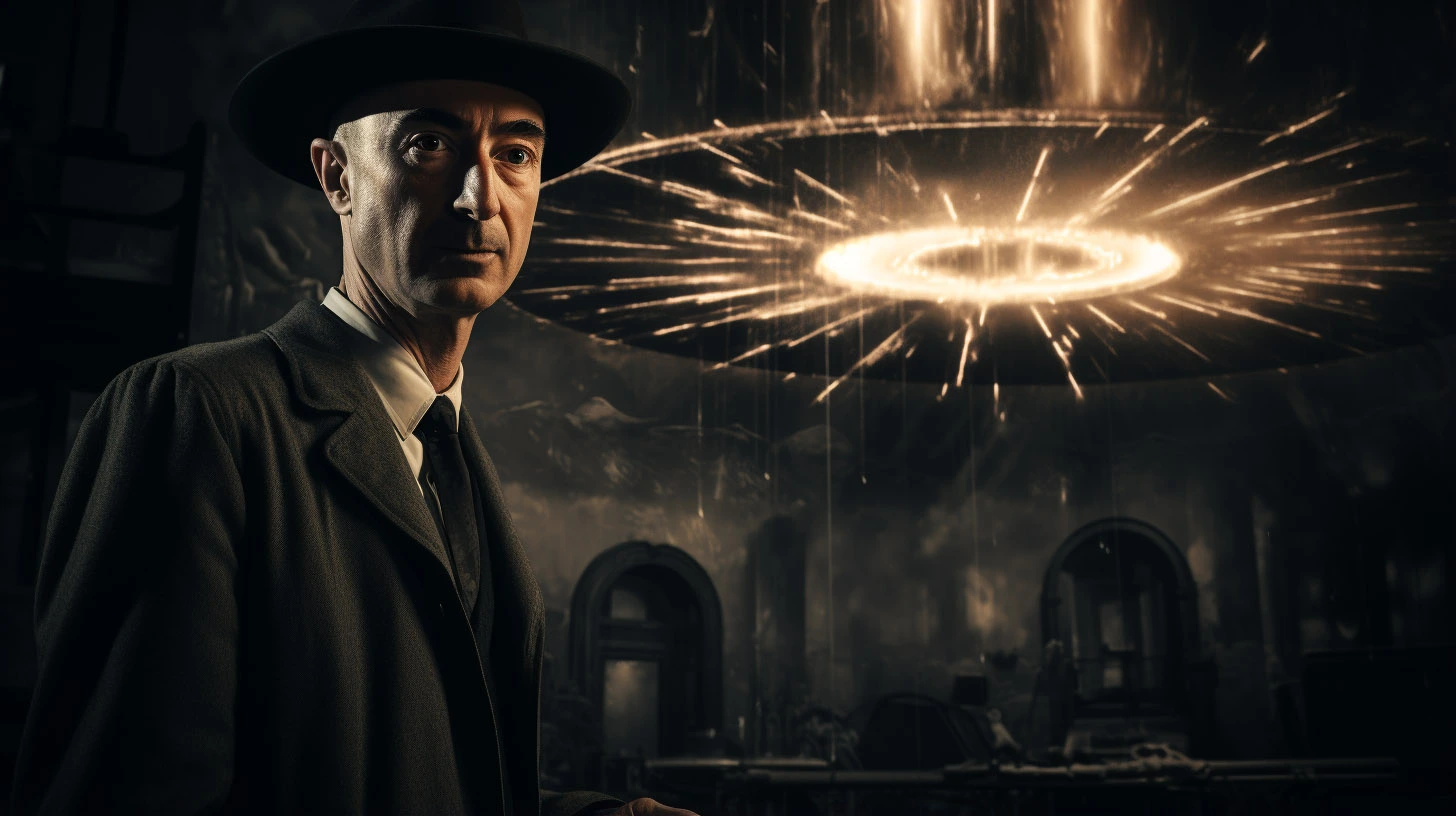Scientist Julius Robert Oppenheimer was one of the most famous and also most controversial scientists in history. Despite achieving certain successes in his career, looking back at his past, this famous scientist also caused no small amount of turmoil in his own life.
Criminal or Contributor?
Julius Robert Oppenheimer (April 22, 1904 – February 18, 1967) was an American theoretical physicist and professor of physics at the University of California, Berkeley. As the wartime head of the Los Alamos Laboratory, he was among those who are considered the “father of the atomic bomb” for their role in the Manhattan Project, the World War II project that developed the first nuclear weapons.
Oppenheimer was born in New York City into a wealthy Jewish family. His father, Julius Oppenheimer, was an importer of textiles who had immigrated to the United States from Germany in 1888. His mother was artist Ella Friedman. After much effort by Oppenheimer’s father, in 1912 the family moved to an apartment on Manhattan’s Upper West Side, an area known for its luxurious private villas and modern apartment buildings. Oppenheimer had a younger brother named Frank, who also became a physicist.
Oppenheimer first went to the Alcuin School, and in 1911 he entered the Ethical Culture Society School (now the Fieldston School), a prestigious preparatory school in the Ivy League system. Oppenheimer excelled in English and French literature, and especially loved mineralogy.

He completed the 3rd and 4th grades in one year and skipped half of 8th grade. In his final year of high school, he became interested in chemistry. He entered Harvard to study chemistry a year late, at age 18, having suffered from colitis while prospecting for minerals during a family summer vacation in Jáchymov, Czechoslovakia.
In addition to his major in chemistry, Harvard’s curriculum also required that he study history, literature, philosophy, or mathematics. He made up for his late enrollment by taking six courses each semester and was admitted to the honorary society Phi Beta Kappa. In his first year, he was allowed to take graduate-level physics based on his independent study results, meaning he did not have to take the basic courses and could jump right into advanced ones. A course on thermodynamics by Percy Bridgman drew him to experimental physics. He graduated summa cum laude in just three years.
Oppenheimer made important discoveries in theoretical astrophysics, especially regarding general relativity and nuclear particle theory, nuclear physics, spectroscopy, and quantum field theory, extending this theory to quantum electrodynamics. The mathematical formalism of relativistic quantum mechanics also attracted his interest, although he doubted its feasibility.
On October 9, 1941, shortly before the United States officially entered World War II, President Franklin Roosevelt approved an emergency program to develop atomic bombs. In May 1942, National Defense Research Committee Chairman James Bryant Conant, who had been Oppenheimer’s professor at Harvard, invited him to take charge of fast neutron calculations.
He gained the nickname “Fast Neutron Fracture Coordinator,” referring to the propagation of a fast neutron chain reaction in an atomic bomb. One of his first acts was to organize a summer seminar on bomb theory at his office building in Berkeley.

A group of European physicists along with his students, including Robert Serber, Emil Konopinski, Felix Bloch, Hans Bethe, and Edward Teller, attended. They were busy calculating what was needed and in what order to manufacture the bomb. The efforts of the scientists at Los Alamos were realized in the first nuclear test near Alamogordo on July 16, 1945, a place Oppenheimer code-named “Trinity” in mid-1944.
At a general meeting at Los Alamos on August 6, 1945 (the night the atomic bomb was dropped on Hiroshima), Oppenheimer walked onto the stage, clasping his hands together “like a prizefighter with a championship on his hands” while the crowd cheered. He regretfully remarked that the bomb had not been ready in time to use against Nazi Germany.
However, he and many other project members felt very sad about the subsequent bombing of Nagasaki three days later, as they felt the second bomb was militarily unnecessary. On August 17, 1945, he went to Washington to personally deliver a letter to War Secretary Henry L. Stimson expressing his and others’ dissatisfaction as well as their wish to ban nuclear weapons.
In October 1945, Oppenheimer was allowed to meet with President Harry Truman. The meeting went badly after Oppenheimer said he felt “my blood on my hands.” The remark angered Truman and he ended the meeting. Truman later told Deputy Secretary of State Dean Acheson, “I don’t want to see that son-of-a-bitch in this office ever again.” However, due to his leadership at Los Alamos, he received the Medal of Merit (the highest civilian honor in the United States) from Truman in 1946.
Nearly Became a Murderer
From the collected information, Oppenheimer was a child with an intellect very similar to Chris Langan’s. His parents saw him as a genius. One of his teachers recalled: “The boy soaked up every new idea presented to him in a delightful, perfect way.”
Oppenheimer enrolled at Harvard and then Cambridge University to pursue a doctorate in physics. There, Oppenheimer, who had already struggled with the despair that haunted him his whole life, became increasingly disheartened.
His talent was for theoretical physics, and his supervisor – Professor Patrick Blackett (who later won the Nobel Prize in 1948) – forced Robert to do menial experimental physics tasks, which Robert hated intensely.
Robert became increasingly emotionally unstable, and then, in a move so bizarre that to this day no one fully understands it, Oppenheimer took some chemicals from the lab and tried to poison his supervisor.
Previously, he had wanted to study experimental physics but was prevented due to his clumsiness. In 1926, while on vacation in Corsica, Oppenheimer confessed to two friends that he had to return to Cambridge immediately. The reason was that before leaving, he had smeared a layer of toxic chemicals from the lab onto an apple and placed it on Blackett’s desk. Oppenheimer wanted to go back to warn Blackett and hoped he wouldn’t eat the poisoned apple.
Fortunately, Blackett was unharmed. However, the university’s leadership was informed of the incident and intended to convict Oppenheimer. At a prestigious place like Cambridge, the school’s Board of Directors did not overlook a big incident like a student plotting to assassinate his teacher. Thanks to the timely intervention of his parents, Oppenheimer was not convicted.
However, he was put on probation and had to undergo psychological evaluations. At the end of 1926, Oppenheimer left Cambridge after accepting an invitation to study theoretical physics at the University of Gottingen. Oppenheimer’s relationship with Blackett was also reconciled afterwards and they continued to contribute to the scientific development of mankind together.
 Skip to content
Skip to content








